Experts offer tips for deer-resistant plants for a Wisconsin garden
For those of us who live in or near a city, nothing is more exciting than seeing deer prancing around our communities.
On the flip side, nothing is more frustrating than when those same sweet animals munch on the plants in our gardens as if they were part of a buffet planted just for them.
Keeping deer from decimating gardens is a struggle a lot of people throughout southeastern Wisconsin are having these days.
But instead of drawing them into our gardens by planting their favorite foods, experts say gardeners can at least partially keep them at bay by selecting from a wide variety of deer-resistant shrubs, perennials and annuals.
But deer-resistant doesn’t mean they will be totally safe.
“There are a lot of deer-resistant plants out there, but that doesn’t mean they are deer-proof, said Zannah Crowe, educational horticulturist at Heyden’s Gardens in Cedarburg. “If deer are hungry, they will eat just about anything shy of things that are toxic. Fawns will also experiment and eat things adults won’t eat.”
Crowe said while trees aren’t a big problem as they can quickly grow out of the animals' reach, deer can decimate some shrubs, perennials and even annuals.
“I’ve found in the last couple of years more people are looking for deer-resistant annuals. Deer are becoming so confident that they are eating out of patio containers.
“Growers have become aware of this issue and are marketing plants that are naturally deer resistant. ... There are not more deer-resistant plants now, but they are being marketed as such more now because of the increased problems that the gardening public is having with deer-browsing damage.
“There has also been some breeding of new plants. There are hosta varieties that deer are less likely to eat and breeders are working with that characteristic to try to develop a more deer-resistant hosta,” she said.
Andrew Jager, marketing manager at Walters Gardens, a wholesale grower in Zeeland, Michigan, that supplies plants here in Wisconsin, said there is more demand for deer-resistant plants these days.
“You are seeing shifts in garden centers carrying more plants that are more deer resistant as deer get more comfortable in yards and are coming right up next to houses to eat,” he said.
Steven Engel, regional account manager at PanAmerican Seed, said that these days deer may be venturing farther into more populated areas due to some of the drought conditions we have been experiencing.
“When food becomes scarce out in the wild, deer are looking for other food sources,” he said.
Deer-resistant flowers and shrubs for your garden
So what can gardeners plant?
Crowe said a general rule is deer will not seek out plants that are toxic or those that have very strongly scented foliage such as herbs, ornamental salvia, lavender, peonies or bearded iris.
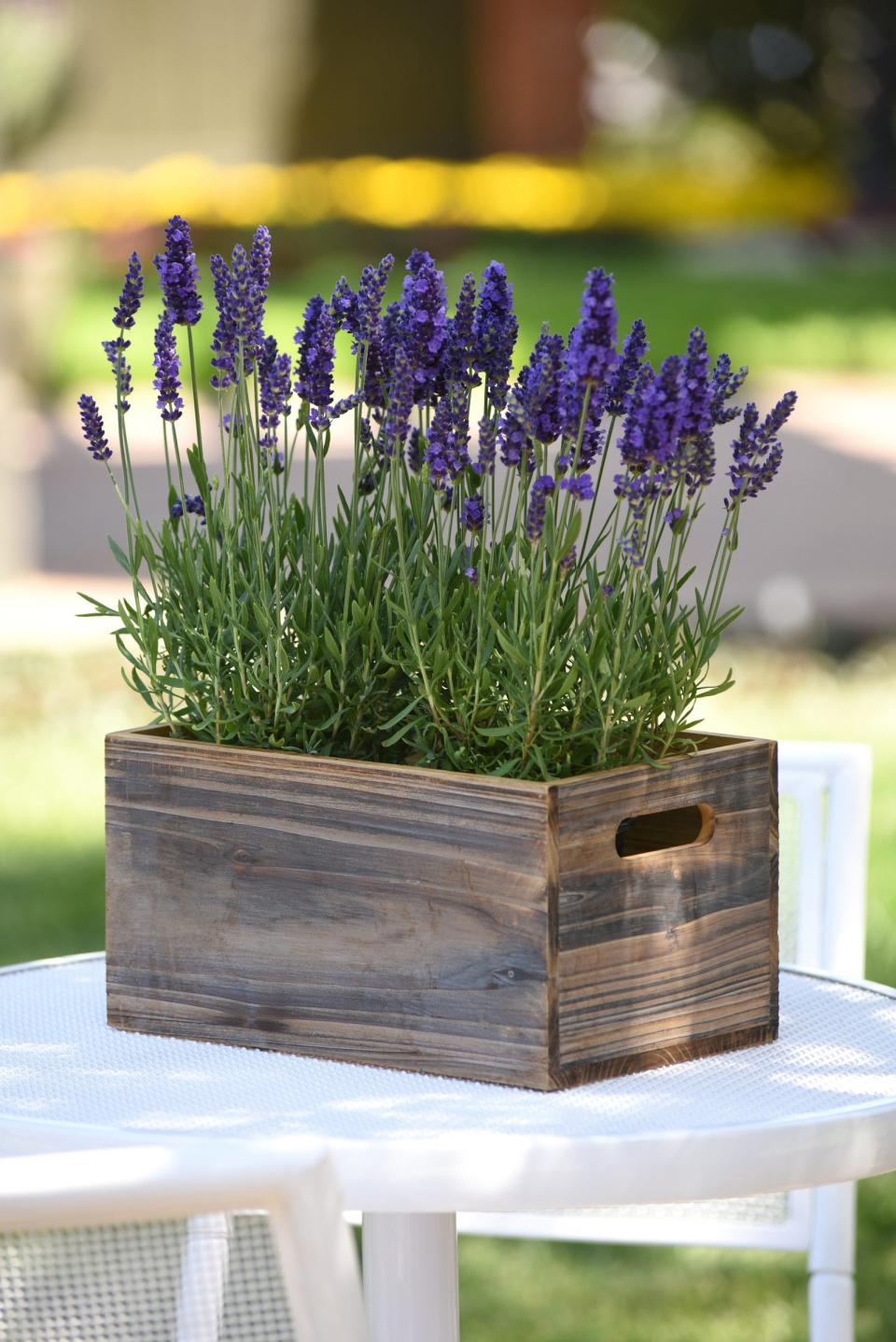
She said she has also never known them to eat poppies, and they rarely eat weigela. They also don’t like daffodils, forsythia, lilacs and spirea.
They also avoid plants with milky sap, plants that have hairy, gray or silver foliage, and most plants with thorns.
“But they will eat roses. The only ones they won’t eat is the rugosa rose,” she added.
Engel said when asked what plants he recommends for those with deer issues, he suggests Blue Spear lavender, New Dimension salvia, Guardian delphinium, Bonanza marigold, Double Zahara zinnias and Landmark lantana, as deer don’t like their strong smell.
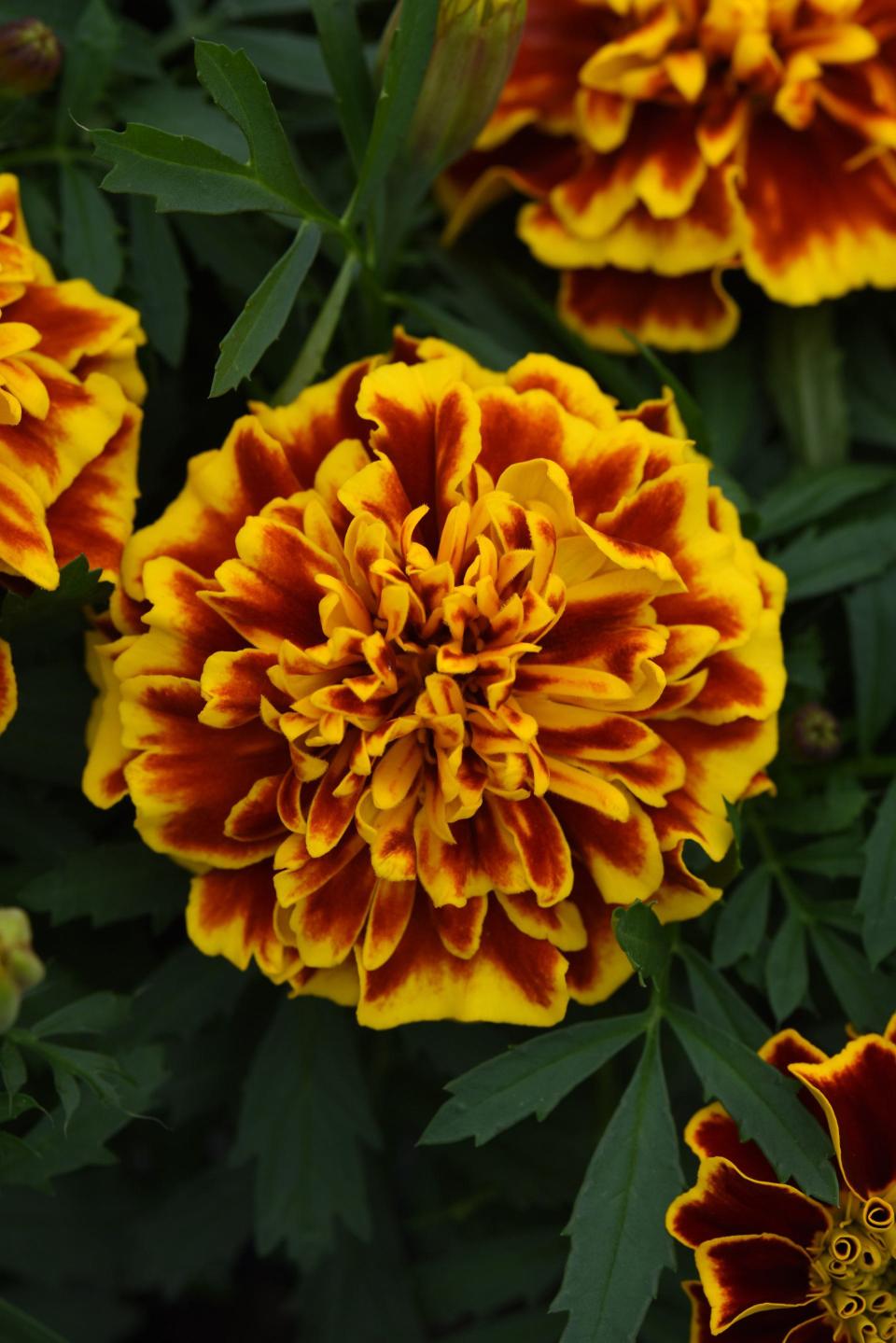
“They will still eat any of these if they are hungry enough, but these are the things they will come to last,” he said.
Kurt Minor, manager and vice president at Minor's Garden Center, 7777 N. 76th St., said one of the more common plants deer like to eat is arborvitae, which are often used to create screening from neighbors.
He said he sells two varieties he has never seen or heard of deer eating: the green giant arborvitae and spring grove arborvitae, fast-growing species that get to be about 30 feet high by 5 feet wide.
“When snow covers a lot of food sources for deer, that’s when they really go after the arborvitae. ... But deer don’t like these plants. They don’t touch them. I have watched them walk right by them," he said.
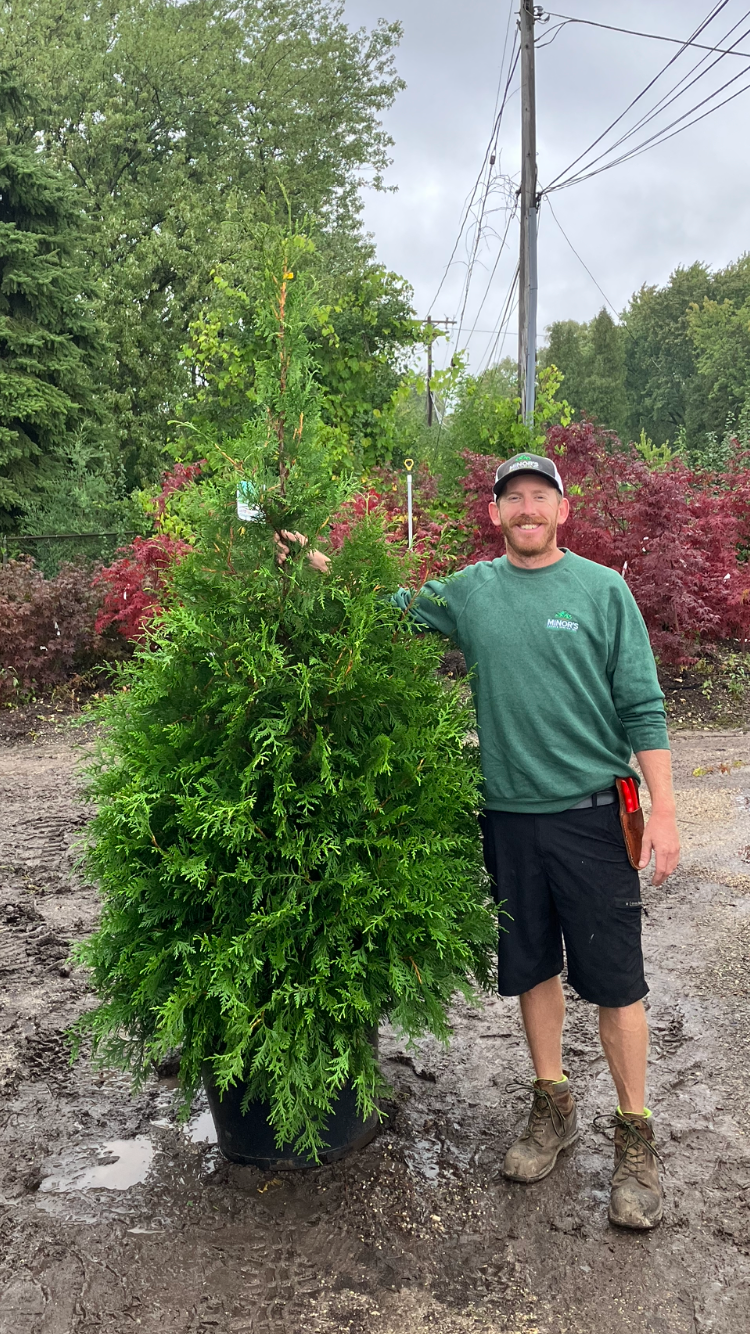
Other deer-resistant shrubs Minor suggests to customers include potentilla, which deer don’t like due to their fuzzy texture; boxwood, which is often used to create hedges; shrubs with thorns such as barberry, and junipers. Bleeding heart is also a perennial they don’t like.
Jager said brunnera is a perennial that’s also naturally very deer resistant. He said the Jack of Diamonds and Queen of Hearts brunnera are good choices for growing in southeastern Wisconsin.
“That genus has a very prickly texture to it ... it has a lot of hairs on the stems which deer are not attracted to," he said, adding that they make sure to retain those characteristics when they breed the plant.
Other plants that are low on the food list for deer are Serendipity ornamental onion (allium) and Drops of Jupiter ornamental oregano, as they have strong flavors.
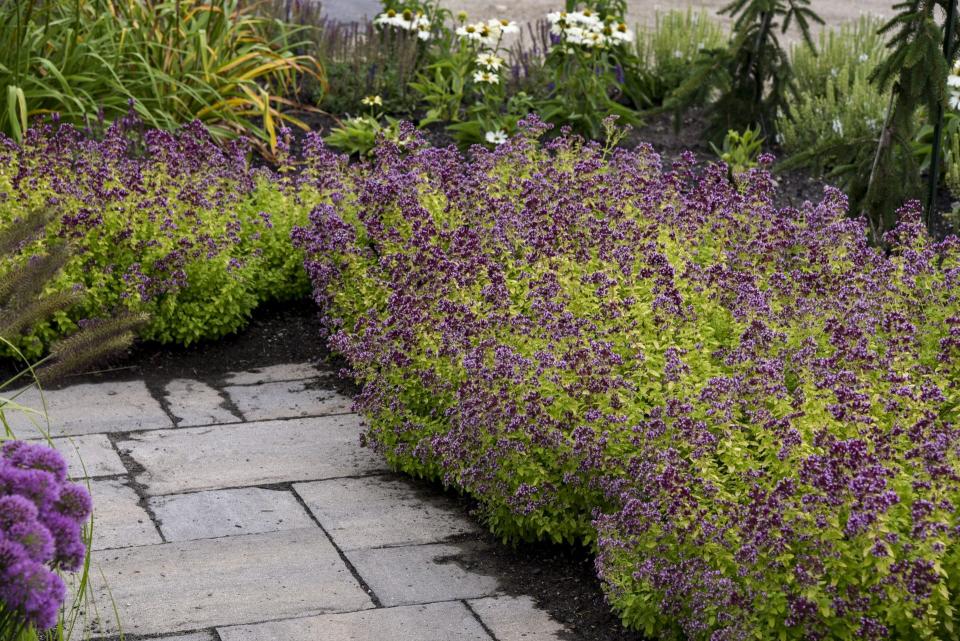
He said some grasses also are naturally deer resistant. They include switchgrasses like Prairie Winds Niagara Falls, Cheyenne Sky or Apache Rose, which have sharp-edged leaves. Prairie Winds Blue Paradise little bluestem is another option.
He said veronica (Wizard of Ahhs spike speedwell, for example) and baptisia (Lemon Meringue) are other plants considered to be relatively safe.
Deer-resistant ratings help gardeners find things to plant
Natalie Carmolli, public relations specialist for Proven Winners ColorChoice Shrubs in Grand Haven, Michigan, said her firm currently has 32 deer-resistant shrubs in their line. She said these plants have been rated “rarely damaged” by the Rutgers New Jersey Agricultural Experiment Station, and the group’s website (njaes.rutgers.edu/deer-resistant-plants) is a helpful resource for those with deer issues.
This rating, she said, makes it easy for home gardeners to find plants that will be one of the last things deer want to eat. And she knows firsthand how well some of them work, as she has planted some of them in her Grand Haven garden that is “full of deer.”
One she likes is a petite potentilla called Happy Face Hearts, a small to medium shrub.
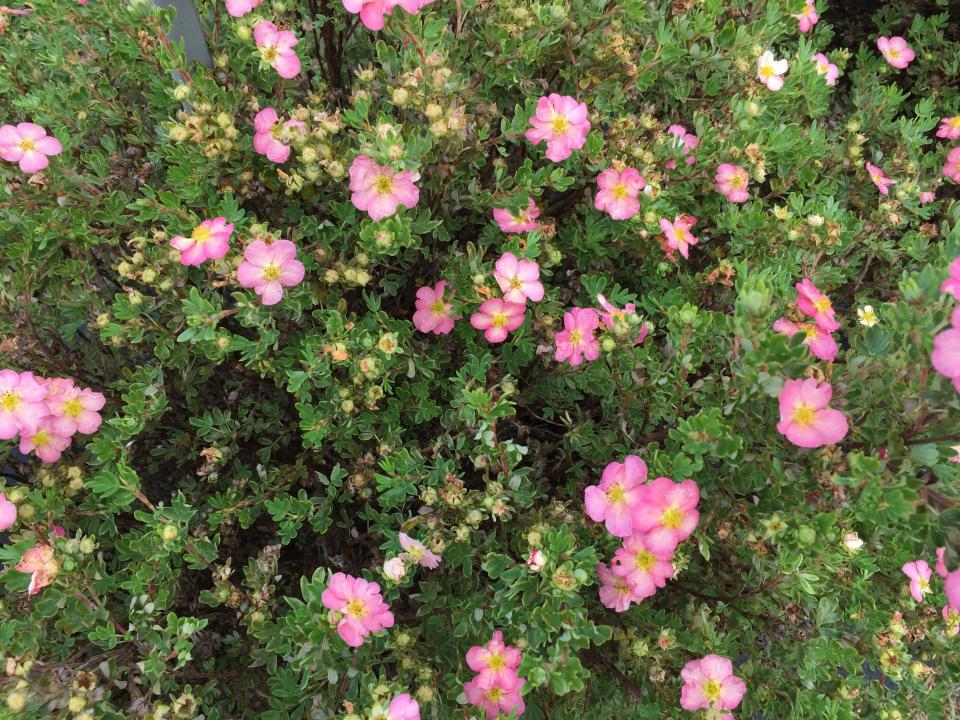
“It’s long-blooming and hardy to zone two. ... I had a ton of deer and they left it alone,” she said.
Beyond Midnight caryopteris is another shrub she has in her yard that “the deer completely ignored.”
One shrub in her garden that’s not in the deer-proof program “but could be” is a buddleia called Pugster Blue.
“It’s a dwarf, so it only gets to 2 to 3 feet tall and wide, and is also very drought resistant.”
For those who love junipers, she suggests Montana Moss, a low-growing juniper that has done well in her firm’s display gardens and provides full-season color with its blue-green foliage.
Consider bloom times and avoid 'deer candy'
Jager said in addition to using plants deer naturally don’t like, gardeners can also protect their gardens by using plants that grow quickly and/or bloom consistently, as they aren’t as likely to die if deer do occasionally munch on them.
Here a hardy hibiscus like Summerific Holy Grail is a good option.
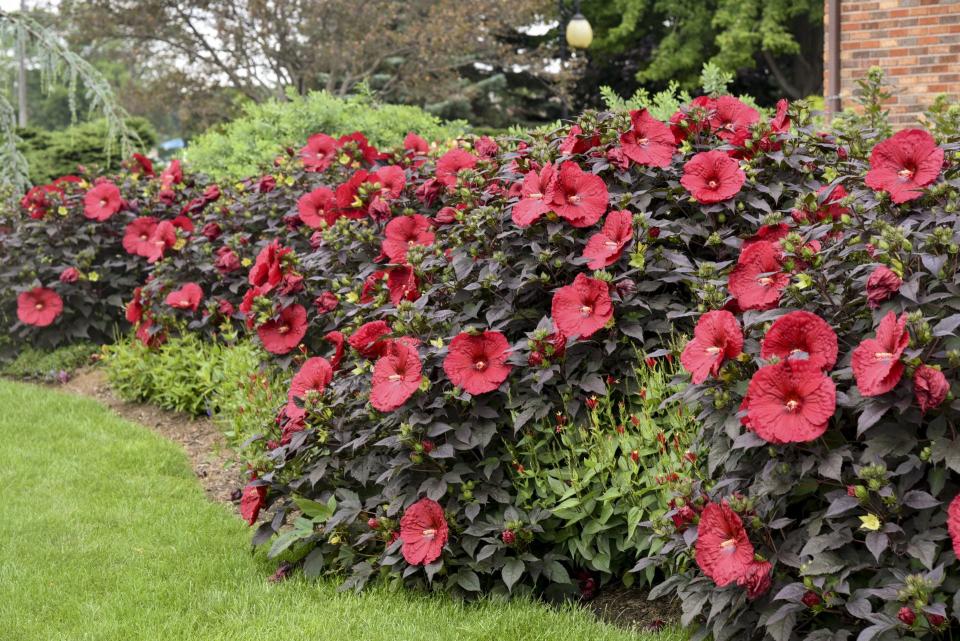
“We do look at how fast a plant grows. We look at, will it grow through deer browsing, but still looks great? If a deer will munch on it a little, as long as it’s not every day, will it be OK?
“We also select plants for indeterminate blooming,” as deer won’t kill all the blooms if they eat it, he added.
He said the time of year plants are eaten can also make a difference.
“In spring they put all their energy into coming out of the ground, and they may not have the energy to come up a second time if they are eaten then. They may waste away.
“Some things like hostas will come back ... but a Shasta daisy and tall garden phlox can only handle so much deer browsing,” he said.
Engel said those who have deer issues should also be careful not to plant flowers in the “deer candy” category.
“They love pansies and hostas. And deer like some of the plants that produce flowers with a sweet nectar like cuphea," he said. “If you live in an area that’s under deer pressure, try to plant things that aren’t their favorites as this will keep them at bay a little bit.”
Crowe said other plants that can bring deer into a garden are tall summer phlox, lilies, daylilies, and tulips.
Jager said deer are also very attracted to tender and younger growth.
“Plants right out of the garden center might be fertilized and might have more tender growth. Once they are in the landscape for a couple of seasons they get very acclimated to that space and don’t need as much fertilizer, so their growth doesn’t tend to be as tender and deer might leave them alone.
“The older a plant gets, the more unattractive it will be to deer, because it will have thicker foliage,” he said.
Minor said some of the new smaller, more compact plants may also have an advantage over larger ones.
“There are, for example, a lot of compact new hydrangeas that are in the 2- to 3-foot range. In winter when there are a few feet of snow, that stuff is covered," he said. "It would be a plus. But would I rely on it? No.”
He added that while there are ways to use plants that aren’t deer resistant in a garden, it is more work for the homeowner.
When using varieties of arborvitae deer like, for example, they can be wrapped with burlap in winter or fencing can be put around them.
Crowe said there are also deer repellent products that work well.
“There are some very effective deer repellents and they aren’t made of chemicals; they’re made of harmless organic materials. ... Most of deer repellents have an egg solid base, dried blood or hot peppers,” she said.
She added these repellents work best when applied in spring when plants are tender, noting “that’s the most effective time to apply it as they will get used to feeding someplace else.”
She said deer-resistant plants can be planted now or in spring.
"With shrubs, you can plant them right up until the ground freezes. This time of year their roots will have time to get established.
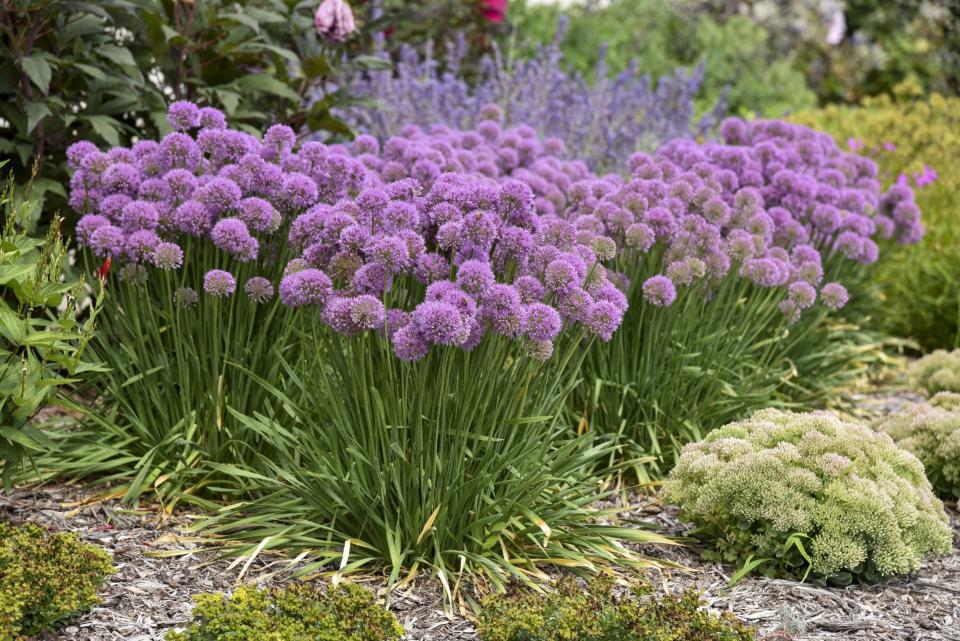
"It’s also a good time to plant early-season bulbs as a lot of them are deer resistant. They don’t eat most early-season bulbs like snow drops, glory of the snow, daffodils and allium,” she said.
One negative to planting now is that this time of year plant availability might not be as good as in spring. A positive is that you can get plants at bargain prices.
More resources for finding deer-resistant plants
Heyden’s Gardens deer-resistant trees and shrubs: heydensgardens.com/deer-resistant-trees-and-shrubsHeyden’s Gardens deer-resistant perennials: heydensgardens.com/deer-resistant-perennialsHeyden’s Gardens deer-resistant annuals: heydensgardens.com/deer-resistant-annuals
Heritage Flower Farm deer-resistant heritage plants: heritageflowerfarm.com/product-category/our-plants/deer-resistant-plants/
Proven Winners' 22 best deer-resistant shrubs: provenwinners.com/learn/deer-resistant-shrubs
This article originally appeared on Milwaukee Journal Sentinel: Experts offer tips for deer-resistant plants for a Wisconsin garden

